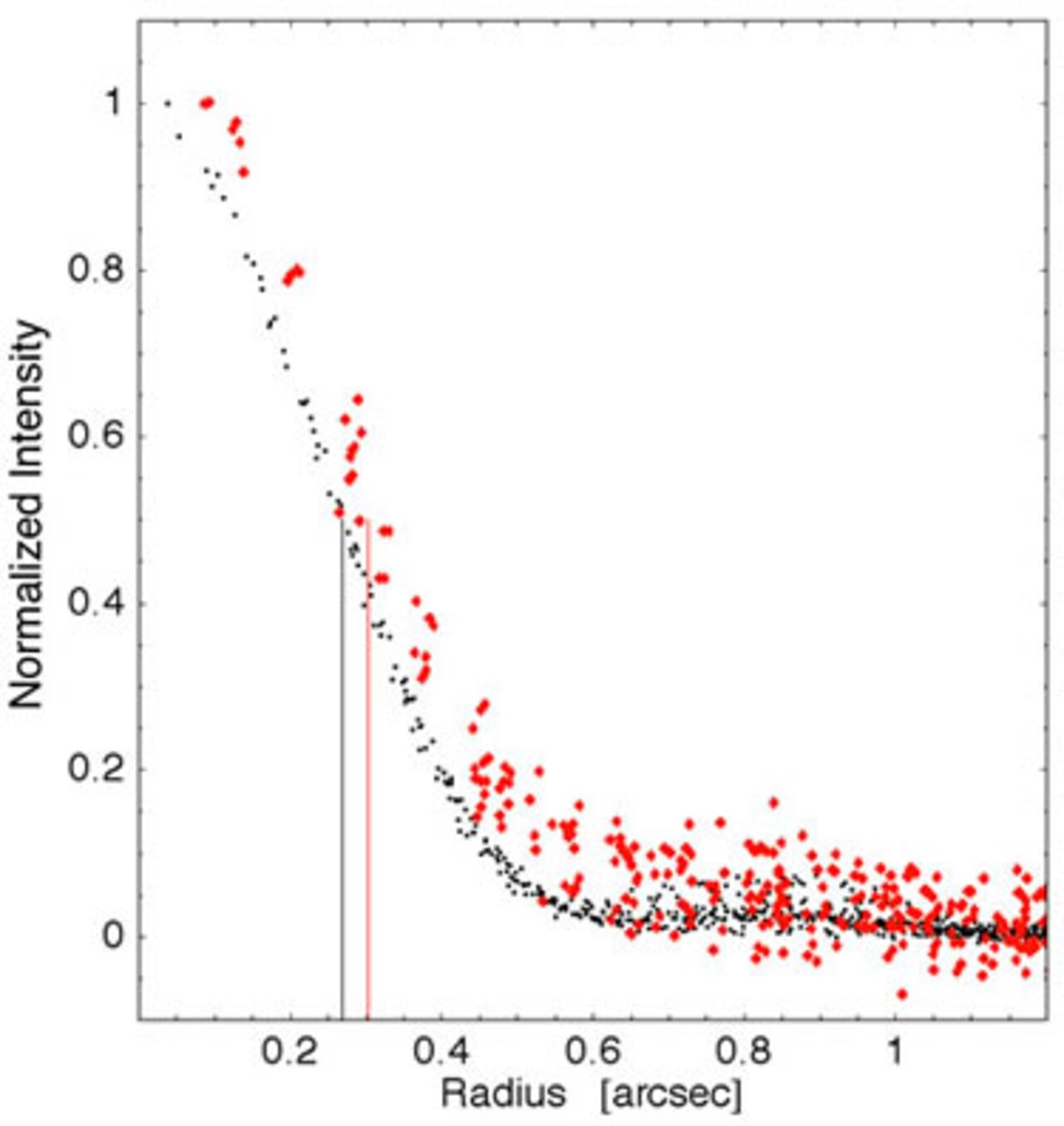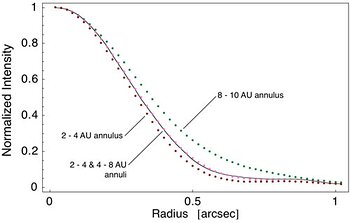Tightening the (Asteroid) Belt around Zeta Leporis
January 19, 2007

January 19, 2007
New mid-infrared images of the Zeta Leporis circumstellar disk obtained with T-ReCS on Gemini South have for the first time revealed what researchers are calling an "exo-asteroid belt" around another star. Far from a passive dust disk, the new data show that there must be some sort of ongoing collisional activity within a few astronomical units (AU) of the star. These collisions sustain the replenishment of the small dust grains detected in the T-ReCS images. The results also lend support to the theory that the Zeta Leporis system contains a large reservoir of asteroid-sized bodies as well as the possibility of rocky planets.
The team, lead by University of Florida Ph.D. student Margaret Moerchen and her advisor Charles Telesco, observed Zeta Leporis as part of a broader research program centered on the search for resolved circumstellar disks. The Gemini observations supplement previous observations made in 2001 that placed a strong limit on the size of the disk, but did not resolve the dust emission from that of the central star.
The team using Gemini, which included UF researchers Chris Packham and Tom Kehoe, found that the majority of the dust grains in the system reside within 3 AU from the central star, exactly where the asteroids orbit in our own Solar system. The fact that the dust emission comes from so close to the central star makes this type of observation very difficult to carry out. It is the combination of the excellent mid-IR performance of Gemini South and the ingenuity of the researchers that makes this type of discovery possible.
The result appears in The Astrophysical Journal and was featured in the January 8, 2007 issue of ScienceNews. In the ScienceNews article Charles Beichman of NASA's JPL says, "The high angular resolution measurement of the Zeta Leporis disk is a very exciting result. We now have direct evidence for structures around other stars that are directly analogous to the asteroid belt in our solar system."


